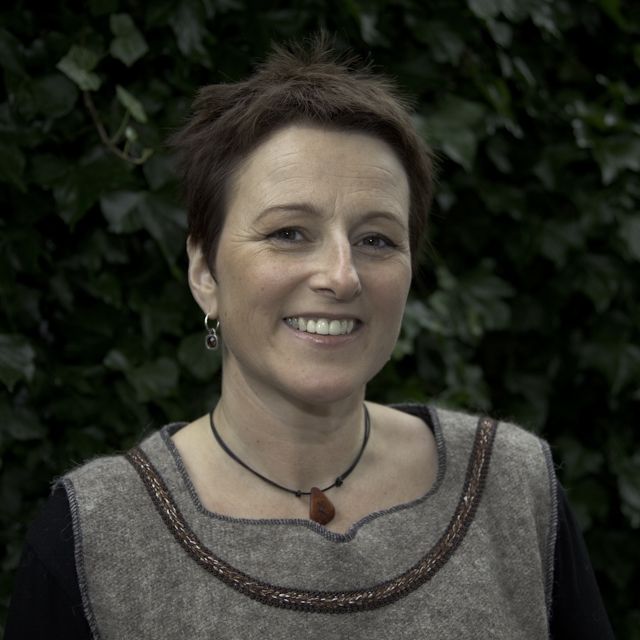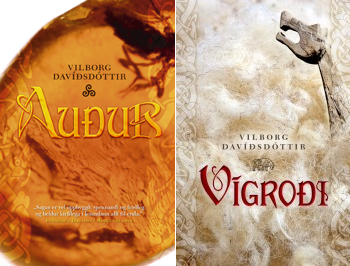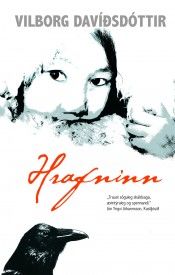Vilborg Davíðsdóttir
“The challenge, and no less pleasure, of the work behind my books is, in no small part, unearthing knowledge that helps us understand the mindset of a vanished world,” says Vilborg Davíðsdóttir, novelist and folkloristics scholar, who during the course of her twenty-year career has drawn notice for carefully wrought historical novels.

Vilborg has produced seven novels, set in various time periods. Her books have been translated into foreign languages, and she was among the many Icelandic writers published in German during Iceland's year as Guest of Honour at the Frankfurt Book Fair. “It was thrilling to experience the attention paid to Icelandic literature during the Guest of Honour year,” she says. “There, I discovered a group of German-speaking readers who were incredibly interested in everything about Iceland, and especially its history.“
What meaning does the increased spread of Icelandic literature have for you?
“Of course, I primarily write for my Icelandic readers, but it's undeniably satisfying to know that the number of people who can read my books is constantly growing. Iceland is home to a third of a million people. In contrast, I'm told that 180 million have German as their first or second language, and English, of course, is the world's lingua franca. I have seen Amazon reviews of my books written by people from all over the world, and it feels a little weird to read of an Indian reader's satisfaction with a book like On the Cold Coasts, which takes place in 15th century northern Iceland. It will probably be even weirder next year, when an Arabian translation of that particular book will be published in Egypt.”
Telling the story of Iceland's most famous female settler
 Vilborg's latest two books, Audur (orig.Auður) and Crimson Sky (orig. Vígroði), tell the story of Iceland's most famous female settler, Audur the Deep-Minded, who figures prominently in the early history of Iceland. Although Audur appears in numerous sagas, Vilborg discovered that surprisingly little information exists on her. “The sagas and chronicles do tell us that Audur lived in Northern Scotland before coming to Iceland in the late 9th century, and that Ketill the Flat-Nosed, her father, was a chieftain in what is today known as the Hebridean Isles,” she says. “Her husband, the warlord Ólafur the White, was king of Dublin in Ireland. He is thought to have come from the Isle of Man, and owed allegiance to Norwegian chieftains.”
Vilborg's latest two books, Audur (orig.Auður) and Crimson Sky (orig. Vígroði), tell the story of Iceland's most famous female settler, Audur the Deep-Minded, who figures prominently in the early history of Iceland. Although Audur appears in numerous sagas, Vilborg discovered that surprisingly little information exists on her. “The sagas and chronicles do tell us that Audur lived in Northern Scotland before coming to Iceland in the late 9th century, and that Ketill the Flat-Nosed, her father, was a chieftain in what is today known as the Hebridean Isles,” she says. “Her husband, the warlord Ólafur the White, was king of Dublin in Ireland. He is thought to have come from the Isle of Man, and owed allegiance to Norwegian chieftains.”
What surprised you the most during your research for the books?
“When I started looking at maps of these areas and traveling to them in preparation for the novels, I was quite surprised to see how many place names the Norse have left behind, both on the northern and western British isles, and in Scotland.
“I was also surprised at how many times Ólafur the White is mentioned in 9th century annals of Ireland and Scotland. He fought both with and against the Irish, some of whom forged variously long-lived alliances with him and other Norse chieftains. One of these others was a man known as Ketill the Flat-Nosed, who was probably Audur's father.
“In 866, Ólafur set out from Dublin with a fleet of Viking ships and invaded Scotland, taking many slaves and levying a tax on the inhabitants. This took place as the Danish were conquering the northern areas of England, and Alfred the Great became king over the southern part. Ólafur the White went on to capture an important fort in Strathclyde in 870, and then sailed from there to Dublin on two hundred ships, carrying large amounts of loot and many slaves.
“Although this man never came to Iceland himself, he is ancestor to a large part of the nation, because five of his and Audur's grandchildren came with her to Iceland. To tell the truth, I find it remarkable how little we Icelanders know about these people and what went on in their lives before they settled here at the edge of the world. We always hear about Harald the Fair-Haired in Norway, and how our first settlers fled his tyranny to Iceland, but we forget that a large number of settlers also came to Iceland from the British Isles – second and third generation Norse settlers, who had to some degree mixed with the natives, some of whom were abducted slaves.”
Your first book about Audur could be described as a coming-of-age tale of a woman in the Viking era. Where does the action pick up in Crimson Sky?
“Crimson Sky opens eleven years after the first book ends, in autumn 865. Audur is divorced and lives with her eleven-year-old son on her own land, on the northeastern tip of Scotland. She hasn't had any contact with her family on the Southern Isles out of concern that her father will arrange a new marriage for her to one of his allies. She does decide to visit her childhood home, though, when her brother marries the daughter of [first Icelandic settler] Ingólf Arnarson and Hallveig Fródadóttir. During this time, Iceland has been recently discovered by the viking Naddoddur, when his ship is blown off course on a journey to the Faroe Isles, and people have started talking about this uninhabited island in the far north, at the edge of the world. There are rumors that the rivers and lakes are teeming with fish, but no one is certain if it is even inhabitable in the winter, as close to to Niflheim, [the mythical world of the Norse ice giants], as it is thought to be. Also, the sea journey is long, with no land in sight for most of it. War is brewing in the British Isles, and many are intent on grabbing power in the Norse-ruled regions: the king of Man, the Duke of Orkney and the King of Scotland among them. Around Christmas that same year, Audur's ex-husband, Ólafur the White, is added to this “pack of wolves” when he invades Scotland from Dublin, giving Audur and him occasion to meet again.”
Without women, ships don't go far
 Many of your books deal with contact between different cultures, such as the Inuits and the Norse in The Raven (orig. Hrafninn), and between Norse religion and Christianity in your more recent work. For a folkloristics scholar such as yourself, is it rewarding to approach this material as a novelist?
Many of your books deal with contact between different cultures, such as the Inuits and the Norse in The Raven (orig. Hrafninn), and between Norse religion and Christianity in your more recent work. For a folkloristics scholar such as yourself, is it rewarding to approach this material as a novelist?
“A knowledge of folkloristics is certainly a plus for writing believable historical fiction. But when my facts run out, I'm free to fill in the blanks and improvise, which is of course strictly forbidden among scholars. There are so many things that are brought into relief when two different worlds are brought together. I can show the image that “we” have of ourselves on the one hand, and of the “others” on the other, and then switch perspectives and do it all over again.
“I had written four historical novels when I decided to study folkloristics at the University of Iceland a decade ago, so I entered the field fairly well read on my own. But the academic approach revealed to me a new perspective on the human being and all its seperable natures, customs, beliefs and narrative tradition. Also, I could choose to attend courses that fit whatever I was working on in my books at the time, whether it was Inuit culture, the legends of the Snorra-Edda or the fairy myths of Ireland and Scotland.”
You have also shone a light on a neglected part of Icelandic history: its women. Would you say that there was a feminist element in your work?
“Yes, I'm sure there's truth in that claim. The circumstances of women in former times is a matter close to my heart. Throughout history, it has been taken for granted that there was no need to mention that women put their life in danger every time they gave birth, which could even happen every year during their childbearing years. Many of them died long before their time because infections were common and there were no remedies for them. From childhood until the grave they were expected to serve others, see to children, men, sick people, old people. Women did all the wool work, spun and wove every piece of clothing and sheet, washed, cooked, milked sheep and cows, made butter and cheese – the list goes on forever.
“I think that we, who live with modern abundance, can't imagine how great and important the work contributed by our foremothers was. But when we leaf through the history books we hardly see any mention of them at all. Nameless and faceless, they stand behind men whose greatness was achieved outside the home: going to war, sailing the seas, perhaps even discovering new lands. But if the Naddoddur's wife, whose name is forgotten by all, hadn't sewn the sail for his ship, he wouldn't have gone very far at all.”
Translated from the Icelandic by Steingrímur Teague
